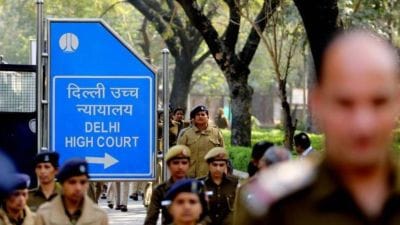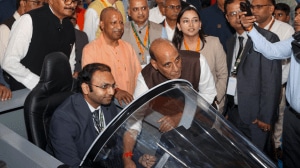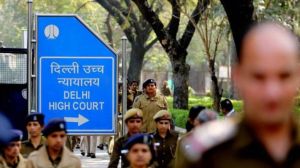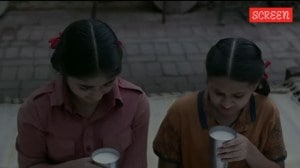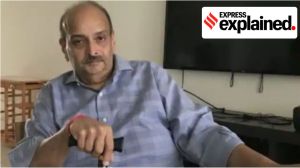Applying "posterity test" to Vajpayee and Singh
Veerappa Moily, who heads the Congress party’s media department, on Thursday invoked “posterity’s judgment” to defend the suicidal course of action that the beleaguered UPA Government is contemplating on the Indo-US nuclear deal.

Veerappa Moily, who heads the Congress party’s media department, on Thursday invoked “posterity’s judgment” to defend the suicidal course of action that the beleaguered UPA Government is contemplating on the Indo-US nuclear deal. “If we go back on the deal,” he told reporters, “what explanation will we give to posterity?” It is interesting to know that Congressmen believe the deal would give Sonia Gandhi and Dr Manmohan Singh a place of pride in history.
Let us, therefore, apply the “posterity test” to the prime ministerial tenures of Dr Singh and his predecessor, Atal Bihari Vajpayee, given that both had to grapple with the nuclear dilemma. Several decades from now, history will remember Vajpayee as the prime minister who took the bull by the horns and announced India’s emergence as a nuclear weapons power by ordering nuclear tests in May 1998. He was well aware of the hypocritical criticism India would face from certain big powers who, after stockpiling huge nuclear weaponry, were — and still are — preaching the virtues of horizontal nuclear non-proliferation to the rest of the world. His government bravely faced the sanctions imposed by the US and its allies, all of whom lifted them later, realising that a country as big and potentially strong as India could not be bullied by their strong-arm tactics. Thus, Operation Shakti — code name for Pokharan II — made Indians proud that we are indeed a strong nation that can take independent decisions guided by our own assessment of our strategic defense needs. Ask any Indian living abroad, and they will tell you that India going nuclear was what compelled the world, especially the West, to start viewing India with greater respect. The “Can Do” spirit, or the “Hum kisise kum nahin” spirit, that we now see among Indians in business and other spheres of life was, to a significant extent, made possible by the “Can Do” decision that Vajpayee took within two months of assuming office in 1998.
Now ask yourselves how history would view Dr Singh’s adventurism on the Indo-US nuclear deal. The Left parties, the indispensable prop for his government since its inception, will most certainly withdraw their support and cause its collapse the moment Dr Singh takes the next step towards operationalising the deal. Would India in 2020 or 2030 recall with pride that Dr Singh was the prime minister who ended India’s “nuclear apartheid” and heralded India’s “nuclear renaissance”? Kindly note that, even in 2030, and with unrestrained import of nuclear fuel and nuclear reactors, the share of nuclear power in India’s energy basket would still be less than 10 per cent, as per the Planning Commission’s most optimistic official projections. Hence, what “nuclear renaissance” are we talking about? Yes, India needs nuclear power, but not the pipedream that there would soon be “nuclear bijlee for all”, courtesy the deal between Dr Singh and George Bush.
History will also put to the test Dr Singh’s claim about ending India’s “nuclear apartheid” since the Indo-US nuclear deal is, self-evidently, less about liberating India from its chronic energy needs and more about bringing India within the US-dictated global non-proliferation regime. The US had tried to arm-twist every Indian prime minister, from Indira Gandhi to Vajpayee, to get New Delhi’s signature on the Non-Proliferation Treaty (NPT). And every Indian prime minister before Dr Singh had stoutly refused to do so, citing the NPT’s discriminatory nature as the reason. In Dr Singh, however, Washington has found a willing ally. Is this something that posterity will remember with pride? Big hopes.
But there is another question in the “posterity test” in which Dr Singh will score zero against full marks secured by Vajpayee. As is well known, until 1998, BJP (and earlier the Jana Sangh) was the only party that explicitly mentioned its commitment to make India a nuclear weapons power in all its election manifestos. However, before the formation of the NDA government in 1998, Vajpayee’s party succeeded in persuading all its allies to support the commitment in the NDA’s common minimum programme. As against this, the Indo-US nuclear deal was neither in the Congress party’s own 2004 election manifesto nor in the UPA’s CMP, which was drawn up jointly by the Congress and Left leaders. Although Dr Singh owed his prime ministership to the support provided by the Left, he started behaving as if the Left’s views on the nuclear deal do not matter. And now he has staked the very existence of his government on this issue. He ought to have learnt a lesson or two from his predecessor, who showed the sagacity of keeping contentious issues (Article 370, Uniform Civil Code and Ayodhya) out of his coalition’s agenda. In contrast, Dr Singh imported a highly contentious issue into his government’s agenda and is now complaining that the Left is not supporting it.
Only a person who has never been in politics, who has got the prime ministerial chair fortuitously (here too, the contrast with Vajpayee is stark), whose party has only around 150 MPs in the Lok Sabha (and he is not one of them), and who does not enjoy majority support in Parliament on the nuclear deal can be so reckless about risking his government’s survival and so careless about his party’s future prospects.





- 01
- 02
- 03
- 04
- 05


